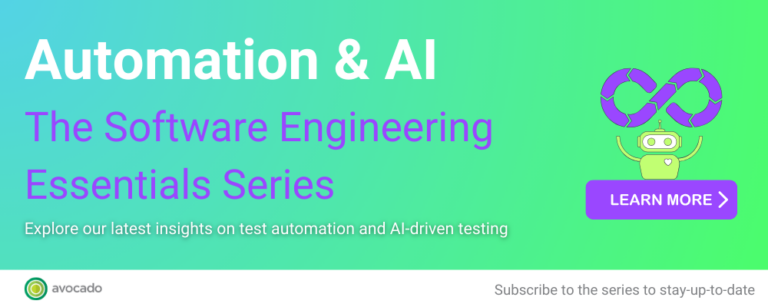Exploring AI-Powered Testing: Beyond ChatGPT
The Expanding Role of AI in Modern Software Testing
Artificial Intelligence (AI) is rapidly transforming how software is tested, delivering new capabilities that go far beyond traditional automation. While tools like ChatGPT and Claude are grabbing headlines for their ability to generate scripts and test data through natural language, the true power of AI in testing lies in a broader, deeper application landscape.
Modern QA teams are now turning to AI to enhance not just test execution, but test design, defect prediction, performance monitoring, and beyond. However, to fully realise the benefits of AI in testing, organisations need to look beyond generative tools—and embrace intelligent, integrated, and strategic solutions.
AI in Testing: Beyond the Buzz
AI in testing is not just about using bots to write scripts. It’s about enabling smarter decisions, identifying risks earlier, improving accuracy, and accelerating software delivery.
Let’s explore how AI is redefining major testing domains—and where it adds unique value.
How AI Enhances Key Areas of Testing
Functional Testing – AI can interpret user stories, UI flows, and historical execution logs to auto-generate test cases that reflect real-world usage and edge conditions.
Regression Testing – AI helps prioritise test cases based on code impact, risk areas, and historical defect data—optimising test execution without compromising coverage.
Performance Testing – AI models can predict usage peaks, simulate load under dynamic conditions, and provide deeper insights into latency and throughput trends.
Security Testing – Machine learning can detect anomalies, flag suspicious input patterns, and identify potential attack surfaces that conventional tools might overlook.
Exploratory Testing – AI doesn’t replace human exploration—but it suggests test targets by clustering defect-prone components or analysing similar past failures.
Accessibility Testing – AI-powered scanning tools detect visual, structural, and content-level issues related to accessibility standards (like WCAG).
Usability Testing – AI collects user interaction data, performs heatmap analysis, and identifies behaviour patterns that indicate usability bottlenecks.
API Testing – AI dynamically generates boundary cases, validates contract changes, and triggers multi-service integration tests based on service usage history.
AI Tools That Power These Capabilities
While ChatGPT and Claude offer conversational capabilities, other AI-powered testing tools go much further in specific areas:
- Self-Healing Test Frameworks (e.g., Testim, Functionize): Automatically fix broken locators and maintain test stability
- Visual AI (e.g., Applitools): Detect pixel-level UI changes across devices and browsers
- Predictive Test Selection (e.g., Launchable): Run only the tests most likely to catch regressions
- Intelligent Automation (e.g., Mabl, TestSigma): Create, execute, and optimise tests based on system intelligence
- Risk-Based Testing Engines: Prioritise test effort based on defect trends, code complexity, and deployment frequency
Generative AI in QA: Where ChatGPT Fits In
Generative models like ChatGPT and Claude support:
- Test case and test data creation from requirements or user flows
- Test script drafting using natural language prompts
- Summarising results and generating reports
- Suggesting exploratory testing paths or questions
- Reviewing automation logic and suggesting improvements
But they work best when used with human validation and in harmony with existing automation frameworks.
Top Tips for Using AI in Testing Effectively
- Start with Solid Automation
AI doesn’t replace automation—it enhances it. Without a stable automation foundation, AI tools often struggle to deliver meaningful results. Begin by automating high-priority, high-value tests across your most critical workflows.
- Use High-Quality, Diverse Data
AI models rely on clean, relevant, and representative data. Ensure that your test logs, defect history, and usage analytics are well-maintained and properly tagged to help AI generate valuable outputs.
- Blend Human and AI Strengths
Let AI handle the speed, scale, and repeatability—but use human testers for judgment, empathy, and exploration. The best outcomes occur when testers and AI work in tandem.
- Integrate AI into CI/CD Pipelines
Embed AI insights into your DevOps workflows—e.g., use risk-based test selection for faster builds, monitor performance regressions post-deployment, or trigger auto-generated tests in feature branches.
- Continuously Review, Tune, and Refine
AI systems aren’t set-and-forget. Regularly evaluate AI outputs, adjust parameters, retrain models, and involve testers in tuning recommendations based on changing requirements or system behaviour.
- Avoid Over-Automation
Not everything needs to be automated or augmented. Use AI where it adds value—like scaling test coverage, finding edge cases, or reducing flaky tests—but leave context-heavy, exploratory, or human-first tasks to your QA experts.
- Focus on Measurable Outcomes
Track how AI impacts defect detection rates, test execution time, coverage levels, and overall release confidence. Quantifying results helps justify investment and identify areas for optimisation.
How Avocado Help
At Avocado Consulting, we help organisations move from curiosity to capability with AI-powered testing. Here’s how:
- Build AI-Ready Automation Foundations
We design and implement scalable, CI-integrated test automation frameworks that provide the stable base AI tools need to thrive.
- Select and Integrate the Right AI Tools
We help you evaluate, pilot, and roll out best-fit AI testing tools—whether you need visual testing, test impact analysis, or self-healing automation.
- Implement Predictive and Risk-Based Testing
Using AI, we help teams prioritise test execution based on risk, business impact, and recent code changes—accelerating regression cycles.
- Introduce AI-Enhanced Observability
We integrate test intelligence into monitoring tools to connect post-deployment behaviour with quality insights.
- Enhance Data-Driven Decision-Making
From test result summarisation to root cause analysis, we bring AI-generated insights into dashboards, reports, and stakeholder reviews.
- Reduce Test Maintenance with Smart Automation
We implement AI features like smart locators and self-healing elements to drastically cut test flakiness and maintenance overhead.
- Support Strategic Roadmaps for AI Testing Adoption
We work with your delivery and QA teams to roll out AI testing capabilities in a staged, low-risk, high-return approach—fully aligned with your business goals.
Learn more about our AI-powered testing solutions by visiting our service page.
Let’s Get Started
Book a Test Automation Framework Review or speak with an Avocado expert.
Haven’t read our first blog? – The Power of Test Automation in Software Testing
Start there to see why automation is the launchpad for all AI-driven testing advancements – or discover more related content below.












